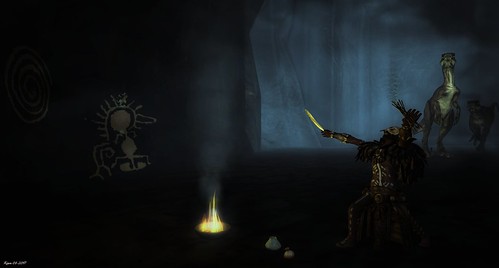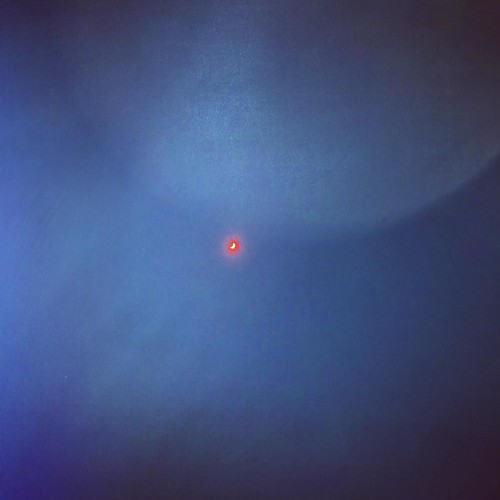H PBS and fixed with 4 paraformaldehyde for 10 min at room temperature and then rinsed three times with PBS. Cells were then permeabilized in PBS containing 0.1 Triton X-100 and washed with PBST before blocking with 5 goat serum for 30 min at 37uC. 22948146 For immunostaining, cells were incubated with anti-SULT2B1 (Abcam, Cambridge, MA, USA, 1:100) for 1 h at 37uC followedby incubation with FITC conjugated goat anti-rabbit secondary antibody (1:200) for 40 min at 37uC. Cells were then washed with PBST twice and nuclei were counterstained with DAPI for 5 min. Cell morphology was visualized with a Zeiss LSM 510 Meta confocal microscope.Modulation of SULTB1 Expression using Cell Transduction with siSULT2B1 Lentivirus or MedChemExpress Eliglustat SULT2B1b AdenovirusMouse SULT2B1 small interfering RNA (mSULT2B1-RNAiLV, target sequence, CAGTGTTTACCGAGAGCAAAT; TU = 1.56109/mL), human SULT2B1 small interfering RNAFigure 3. The effect of SULT2B1b interference or overexpression on the expression of FAS, BCL2 and MYC in Hepa1-6 cells. The mRNA levels of FAS and BCL2 following SULT2B1b overexpression (A, C) and SULT2B1b inhibition (B, D) were analyzed by qPCR. Western blot analysis of: (E) FAS and BCL2 protein levels in Hepa1-6 cells treated with NC-GFP-LV or SULT2B1-RNAi-LV upon serum starvation at 6 h, 12 h and 24 h. (F) The protein levels of BCL2 and MYC in Hepa1-6 cells treated with NC-GFP-LV or SULT2B1-RNAi-LV at different multiplicity of infections (MOI = 25, 50, 100) and cultured in serum-deprived medium for 24 h. (G) FAS and BCL2 protein levels in NC-GFP-LV or SULT2B1-RNAi-LV Hepa1-6 cells cultured in serumfree medium containing 10 ng/mL TNF-a and 10 mg/mL CHX for the indicated times. (H) The BCL2 and MYC protein levels in Hepa1-6 cells infected with NC-GFP-LV and SULT2B1-RNAi-LV at MOI of 25, 50, 100 and treated with 10 ng/mL TNF-a and 10 mg/mL CHX. *represents P,0.05 vs. Ad-GFP group or NC-GFP-LV group. doi:10.1371/journal.pone.0060853.gSULT2B1b Promotes Hepatocarcinoma ProliferationFigure 4. The effects of SULT2B1b interference on the  expression and stability of cyclinB1 in Hepa1-6 cells. The mRNA (A) and protein (B) levels of cyclinB1 were analyzed by qPCR and Western-blot, respectively. (C) The stability of cyclinB1 protein in NC-GFP-LV or SULT2B1-RNAi-LV Hepa1-6 cells was determined with 100 mg/ml CHX treatment. *represents P,0.05 vs. NC-GFP-LV group. doi:10.1371/journal.pone.0060853.g(hSULT2B1-RNAi-LV, target sequence: GGGACTTCCTCAAAGGCGA; TU = 36108/mL) were prepared by Genechem corporation (Shanghai, China). Lenti virus-mediated GFP (NCGFP-LV, TU = 26109/mL) and RFP (NC-RFP-LV, TU = 16109/mL) were used as a negative controls. The recombinant adenovirus encoding human SULT2B1b vectors (Ad-SULT2B1b, TU = 66108/mL) was prepared as described previously [18], Adenovirus-mediated negative control (Ad-EGFP, TU = 66108/mL) was used as a non-specific control vector. Mouse and human hepatocarcinoma cell lines, Hepa1-6 and BEL-7402, were plated into 12-well plates (46104 cells per well), and then infected with lentivirus-mediated SULT2B1 RNAi and 50-14-6 hSULT2B1 RNAi vectors in serum-free medium at a multiplicity of infection (MOI) of 100 respectively, using polybrene (5 mg/mL) reagent to increase the efficiency of infection according to the manufacturer’s protocol, NC-GFP-LV and NC-RFP-LV were used negative control respectively. After 12 hours incubation, the medium was changed to DMEM supplemented with 10 FBS. For adenovirus mediated SULT2B1b infection, Hepa1-6 cells were plat.H PBS and fixed with 4 paraformaldehyde for 10 min at room temperature and then rinsed three times with PBS. Cells were then permeabilized in PBS containing 0.1 Triton X-100 and washed with PBST before blocking with 5 goat serum for 30 min at 37uC. 22948146 For immunostaining, cells were incubated with anti-SULT2B1 (Abcam, Cambridge, MA, USA, 1:100) for 1 h at 37uC followedby incubation with FITC conjugated goat anti-rabbit secondary antibody (1:200) for 40 min at 37uC. Cells were then washed with PBST twice and nuclei were counterstained with DAPI for 5 min. Cell morphology was visualized with a Zeiss LSM 510 Meta confocal microscope.Modulation of SULTB1 Expression using Cell Transduction with siSULT2B1 Lentivirus or SULT2B1b AdenovirusMouse SULT2B1 small interfering RNA (mSULT2B1-RNAiLV, target sequence, CAGTGTTTACCGAGAGCAAAT; TU = 1.56109/mL), human SULT2B1 small interfering RNAFigure 3. The effect of SULT2B1b interference or overexpression on the expression of FAS, BCL2 and MYC in Hepa1-6 cells. The mRNA levels of FAS and BCL2 following SULT2B1b overexpression (A, C) and SULT2B1b inhibition (B, D) were analyzed by qPCR. Western blot analysis of: (E) FAS and BCL2 protein levels in Hepa1-6 cells treated with NC-GFP-LV or SULT2B1-RNAi-LV upon serum starvation at 6 h, 12 h and 24 h. (F) The protein levels of BCL2 and MYC in Hepa1-6 cells treated with NC-GFP-LV or SULT2B1-RNAi-LV at different multiplicity of infections (MOI = 25, 50, 100) and cultured in serum-deprived medium for 24 h. (G) FAS and BCL2 protein levels in NC-GFP-LV or SULT2B1-RNAi-LV Hepa1-6 cells cultured in serumfree medium containing 10 ng/mL TNF-a and 10 mg/mL CHX for the indicated times. (H) The BCL2 and MYC protein levels in Hepa1-6 cells infected with NC-GFP-LV and SULT2B1-RNAi-LV at MOI of 25, 50, 100 and treated with 10 ng/mL TNF-a and 10 mg/mL CHX. *represents P,0.05 vs. Ad-GFP group or NC-GFP-LV group. doi:10.1371/journal.pone.0060853.gSULT2B1b Promotes Hepatocarcinoma ProliferationFigure 4. The effects of SULT2B1b interference on the expression and stability of cyclinB1 in Hepa1-6 cells. The mRNA (A) and protein (B) levels of cyclinB1 were analyzed by qPCR and Western-blot, respectively.
expression and stability of cyclinB1 in Hepa1-6 cells. The mRNA (A) and protein (B) levels of cyclinB1 were analyzed by qPCR and Western-blot, respectively. (C) The stability of cyclinB1 protein in NC-GFP-LV or SULT2B1-RNAi-LV Hepa1-6 cells was determined with 100 mg/ml CHX treatment. *represents P,0.05 vs. NC-GFP-LV group. doi:10.1371/journal.pone.0060853.g(hSULT2B1-RNAi-LV, target sequence: GGGACTTCCTCAAAGGCGA; TU = 36108/mL) were prepared by Genechem corporation (Shanghai, China). Lenti virus-mediated GFP (NCGFP-LV, TU = 26109/mL) and RFP (NC-RFP-LV, TU = 16109/mL) were used as a negative controls. The recombinant adenovirus encoding human SULT2B1b vectors (Ad-SULT2B1b, TU = 66108/mL) was prepared as described previously [18], Adenovirus-mediated negative control (Ad-EGFP, TU = 66108/mL) was used as a non-specific control vector. Mouse and human hepatocarcinoma cell lines, Hepa1-6 and BEL-7402, were plated into 12-well plates (46104 cells per well), and then infected with lentivirus-mediated SULT2B1 RNAi and 50-14-6 hSULT2B1 RNAi vectors in serum-free medium at a multiplicity of infection (MOI) of 100 respectively, using polybrene (5 mg/mL) reagent to increase the efficiency of infection according to the manufacturer’s protocol, NC-GFP-LV and NC-RFP-LV were used negative control respectively. After 12 hours incubation, the medium was changed to DMEM supplemented with 10 FBS. For adenovirus mediated SULT2B1b infection, Hepa1-6 cells were plat.H PBS and fixed with 4 paraformaldehyde for 10 min at room temperature and then rinsed three times with PBS. Cells were then permeabilized in PBS containing 0.1 Triton X-100 and washed with PBST before blocking with 5 goat serum for 30 min at 37uC. 22948146 For immunostaining, cells were incubated with anti-SULT2B1 (Abcam, Cambridge, MA, USA, 1:100) for 1 h at 37uC followedby incubation with FITC conjugated goat anti-rabbit secondary antibody (1:200) for 40 min at 37uC. Cells were then washed with PBST twice and nuclei were counterstained with DAPI for 5 min. Cell morphology was visualized with a Zeiss LSM 510 Meta confocal microscope.Modulation of SULTB1 Expression using Cell Transduction with siSULT2B1 Lentivirus or SULT2B1b AdenovirusMouse SULT2B1 small interfering RNA (mSULT2B1-RNAiLV, target sequence, CAGTGTTTACCGAGAGCAAAT; TU = 1.56109/mL), human SULT2B1 small interfering RNAFigure 3. The effect of SULT2B1b interference or overexpression on the expression of FAS, BCL2 and MYC in Hepa1-6 cells. The mRNA levels of FAS and BCL2 following SULT2B1b overexpression (A, C) and SULT2B1b inhibition (B, D) were analyzed by qPCR. Western blot analysis of: (E) FAS and BCL2 protein levels in Hepa1-6 cells treated with NC-GFP-LV or SULT2B1-RNAi-LV upon serum starvation at 6 h, 12 h and 24 h. (F) The protein levels of BCL2 and MYC in Hepa1-6 cells treated with NC-GFP-LV or SULT2B1-RNAi-LV at different multiplicity of infections (MOI = 25, 50, 100) and cultured in serum-deprived medium for 24 h. (G) FAS and BCL2 protein levels in NC-GFP-LV or SULT2B1-RNAi-LV Hepa1-6 cells cultured in serumfree medium containing 10 ng/mL TNF-a and 10 mg/mL CHX for the indicated times. (H) The BCL2 and MYC protein levels in Hepa1-6 cells infected with NC-GFP-LV and SULT2B1-RNAi-LV at MOI of 25, 50, 100 and treated with 10 ng/mL TNF-a and 10 mg/mL CHX. *represents P,0.05 vs. Ad-GFP group or NC-GFP-LV group. doi:10.1371/journal.pone.0060853.gSULT2B1b Promotes Hepatocarcinoma ProliferationFigure 4. The effects of SULT2B1b interference on the expression and stability of cyclinB1 in Hepa1-6 cells. The mRNA (A) and protein (B) levels of cyclinB1 were analyzed by qPCR and Western-blot, respectively.  (C) The stability of cyclinB1 protein in NC-GFP-LV or SULT2B1-RNAi-LV Hepa1-6 cells was determined with 100 mg/ml CHX treatment. *represents P,0.05 vs. NC-GFP-LV group. doi:10.1371/journal.pone.0060853.g(hSULT2B1-RNAi-LV, target sequence: GGGACTTCCTCAAAGGCGA; TU = 36108/mL) were prepared by Genechem corporation (Shanghai, China). Lenti virus-mediated GFP (NCGFP-LV, TU = 26109/mL) and RFP (NC-RFP-LV, TU = 16109/mL) were used as a negative controls. The recombinant adenovirus encoding human SULT2B1b vectors (Ad-SULT2B1b, TU = 66108/mL) was prepared as described previously [18], Adenovirus-mediated negative control (Ad-EGFP, TU = 66108/mL) was used as a non-specific control vector. Mouse and human hepatocarcinoma cell lines, Hepa1-6 and BEL-7402, were plated into 12-well plates (46104 cells per well), and then infected with lentivirus-mediated SULT2B1 RNAi and hSULT2B1 RNAi vectors in serum-free medium at a multiplicity of infection (MOI) of 100 respectively, using polybrene (5 mg/mL) reagent to increase the efficiency of infection according to the manufacturer’s protocol, NC-GFP-LV and NC-RFP-LV were used negative control respectively. After 12 hours incubation, the medium was changed to DMEM supplemented with 10 FBS. For adenovirus mediated SULT2B1b infection, Hepa1-6 cells were plat.
(C) The stability of cyclinB1 protein in NC-GFP-LV or SULT2B1-RNAi-LV Hepa1-6 cells was determined with 100 mg/ml CHX treatment. *represents P,0.05 vs. NC-GFP-LV group. doi:10.1371/journal.pone.0060853.g(hSULT2B1-RNAi-LV, target sequence: GGGACTTCCTCAAAGGCGA; TU = 36108/mL) were prepared by Genechem corporation (Shanghai, China). Lenti virus-mediated GFP (NCGFP-LV, TU = 26109/mL) and RFP (NC-RFP-LV, TU = 16109/mL) were used as a negative controls. The recombinant adenovirus encoding human SULT2B1b vectors (Ad-SULT2B1b, TU = 66108/mL) was prepared as described previously [18], Adenovirus-mediated negative control (Ad-EGFP, TU = 66108/mL) was used as a non-specific control vector. Mouse and human hepatocarcinoma cell lines, Hepa1-6 and BEL-7402, were plated into 12-well plates (46104 cells per well), and then infected with lentivirus-mediated SULT2B1 RNAi and hSULT2B1 RNAi vectors in serum-free medium at a multiplicity of infection (MOI) of 100 respectively, using polybrene (5 mg/mL) reagent to increase the efficiency of infection according to the manufacturer’s protocol, NC-GFP-LV and NC-RFP-LV were used negative control respectively. After 12 hours incubation, the medium was changed to DMEM supplemented with 10 FBS. For adenovirus mediated SULT2B1b infection, Hepa1-6 cells were plat.
